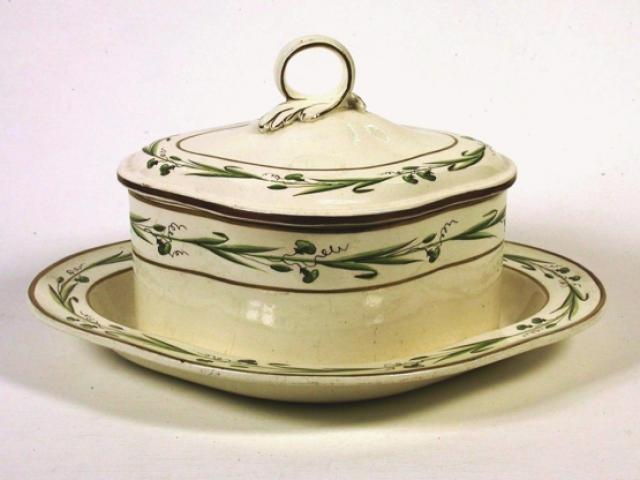Wedgwood and Nature: Green Water Leaf Pattern – Butter Dish, Lid and Stand
During the late 18th century there was a rage for all things natural, and many of the border designs featured in the early pattern books reflect the then popularity of botanical motifs. As an industrialist and entrepreneur, Josiah took full advantage of such popular trends. The variety of hand-enamelled and transfer-printed patterns evolved by his in-house artists used the Queen’s ware body as a ‘canvas’ to great effect.
‘Green Water Leaf’, though deceptively simple, was one of the most eye-catching designs produced at this time, and variations appear at regular intervals in the pattern books testifying to its enduring appeal. ‘Green Water Leaf’ first appears in these records at about 1775 with variations also recorded later.
This butter dish, lid and stand are typical of the high quality domestic wares made at the Etruria factory, many of which were illustrated in Wedgwood’s innovative useful ware catalogues of 1774 and 1790. The pattern was revived during the early years of the 20th century by Alfred and Louise Powell. They used it to help teach the female painters (known as paintresses) training at the school of hand-painting that had been established at the Etruria factory.
Used mainly on dinner and dessert wares, the pattern enjoyed a further revival in the 1980s when it was used on some traditional teaware shapes.
